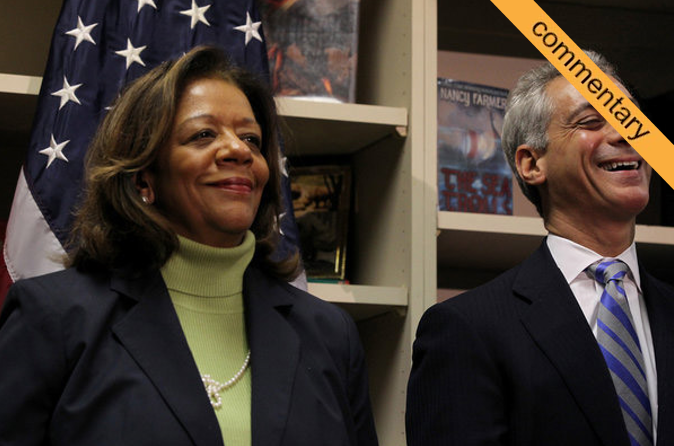Chicago Public Schools CEO announces Latino Advisory Committee–with no Latino teachers

By Ray Salazar, NewsTaco
In her January newsletter to teachers, Chicago Public Schools CEO Barbara Byrd-Bennett announced a Latino Advisory Committee designed to “provide counsel in the following focus areas in particular: Early Childhood Education, Teacher Certification, Dual Language Programming, Seal of Bi-literacy, ELL Funding and Accountability, and Interdisciplinary Latino Curriculum.” Despite the fact that the decisions will completely affect the day-to-day instruction carried out by teachers–not one teacher is included on the committee.

A few of the Latino Advisory Council members were classroom teachers once–just a few. But that was once upon a time. Again, we see how devalued and disrespected teachers are on a regular basis. Educational expertise is determined by degrees and titles–not by proven success in our schools. Or, perhaps, expertise rests with what’s politically correct.
Furthermore, we see what we’ve seen in Latino leadership over the decades: the same people, the same voices rise to say what’s best for our community. Considering our educational challenges as a community, it’s time to bring in qualified teacher voices–not necessarily the loudest ones–to the this decision-making table.
Here’s what Byrd-Bennett did not include in the committee’s list of responsibilities:
1. Preparing more low-income Latinos for admission in the top selective enrollment high schools. In a December post, I wrote about the decreasing number of low-income students at selective-enrollment schools–enrollment that dropped as gentrification in our city grew (see the graph near the middle of the post).
2. Addressing the fact that not one selective-enrollment high school exists in a predominantly Latino neighborhood–look at the population in Jones College Prep‘s neighborhood, North Side College Prep’s neighborhood, Payton’sneighborhood, or Whitney Young’s neighborhood (scroll down to pie charts by race). While students must still test in, these schools’ locations gives many white affluent students a distinct advantage.
3. Solving the overcrowding issue around Midway Airport, where the Latino population increased significantly over the last 15 years (see Hispanics / Latinos map in the link)
4. Securing enduring high-quality education options for low-income Latino students–especially on the Southwest side in light of the recent UNO scandal that jeapordizes 7500 students in 16 schools.
5. Improving the infrastructure at schools with large Latino populations–schools significantly outdated for a 21st century education. At my Southwest side high school, some classrooms still only have one working outlet. Three floors in one wing that used to be a convent are blocked off and are unusable. Some fear emphasizing this wasted space because they think our school might get closed down. Instead, we need to emphasize how outdated our building is because the students in 60629 deserve a new building.
The topics on the the CPS Latino Advisory Committee’s list deserve attention. But their counsel or policy insight remains incomplete without accomplished Latino teacher voices to help them understand the limits and opportunities of implementation when they decide what we–classroom teachers–should do.

This article was originally published in The White Rhino.
Ray writes The White Rhino, a blog about Latino and education issues. Follow him@whiterhinoray.
[Photo courtesy of cps299]
